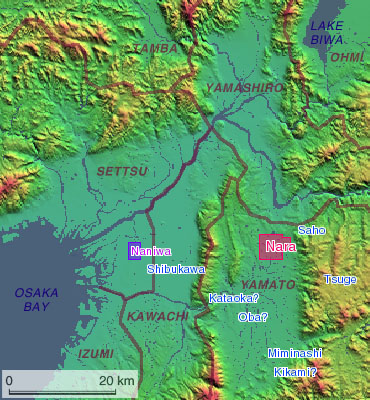In the early 8th century, when Nara was the capital of Japan, there was a nobleman named Prince Nagaya (Nagaya-Oh) who lived in a residence near the Imperial Palace. He held the post of Sadaijin (prime minister) and led the government. But having been falsely accused of plotting a rebellion, he was forced to kill himself in 729. After his death, it became clear that he was framed in a plot by the Fujiwara family, who sought to seize power. Thereafter, the tale of Prince Nagaya’s life has been told as a tragedy.
There are very few sites in Heijo-kyo (the Capital Nara) that can be identified by their residents. From excavated strips of wood, we could identify the site of Prince Nagaya’s residence. It was a large plot and included buildings roofed with tiles, which were precious at that time.
In ancient times paper was expensive, so strips of wood, or wooden writing tablets, were used for daily recordings and communications. From these tablets, we can learn about the everyday life of people in those days. Tens of thousands of tablets excavated from Prince Nagaya’s site met a variety of needs, including records of the prince’s domestic finances as well as shipping tags attached to goods transported to his residence. By studying these tablets, let’s take a glimpse at the economic base of his life.
He and his wife Princess Kibi had estates, called mita or misono, in and around Yamato Province (modern Nara Prefecture). From these estates, rice, vegetables and other goods were transported to their residence. Records suggest that these estates were not only provided by the government according to one’s position but also owned privately at a time when the entire land was, in theory, owned by the state.
Many of these estates were in the southern part of the Nara Basin, where previous capitals were located. But some of them were located in the provinces around Yamato Province, including Kawachi (modern Osaka Prefecture) and Yamashiro (modern Kyoto Prefecture). The following table shows some of their estates as identified by the excavated wooden tablets used as shipping tags.

